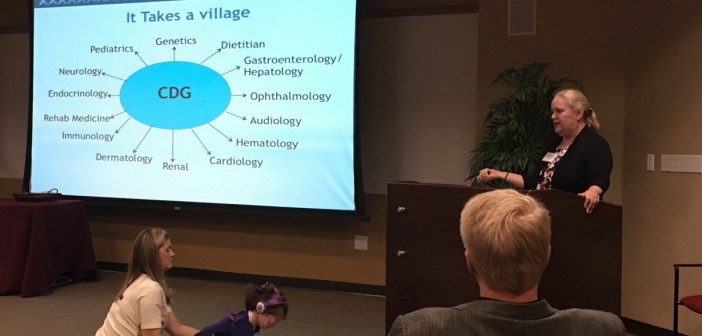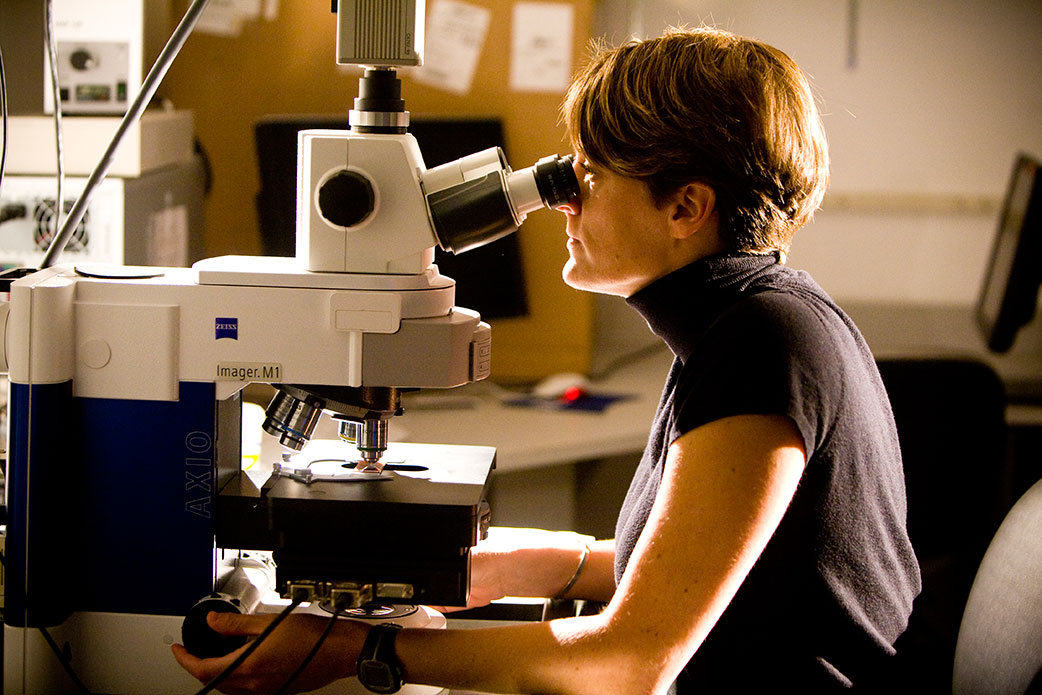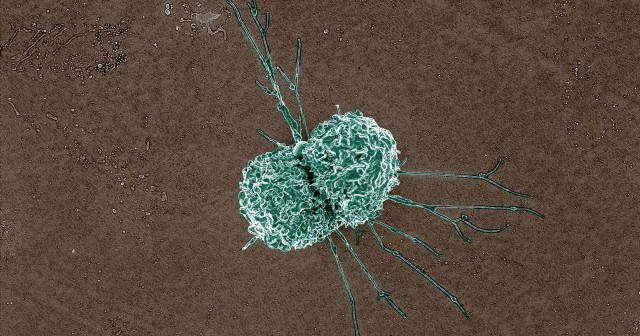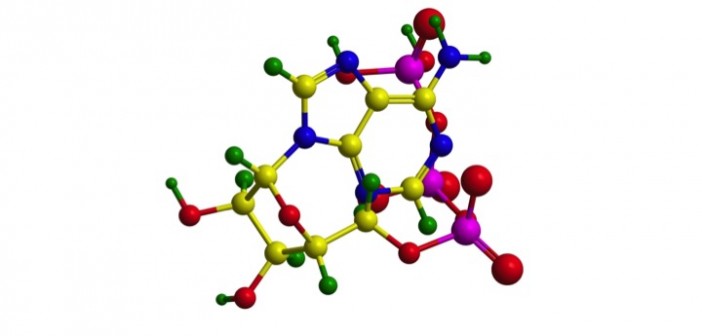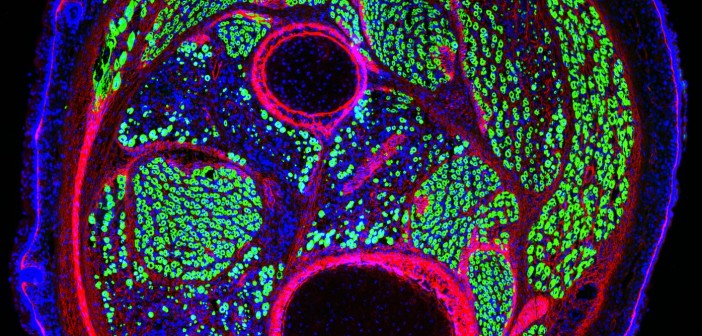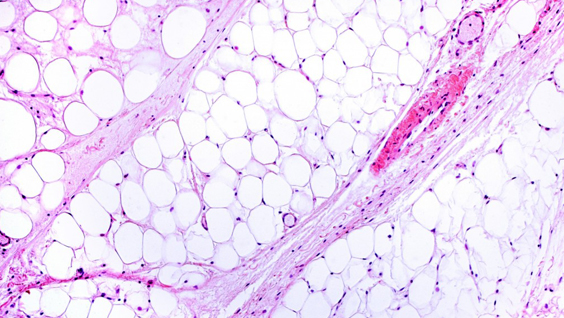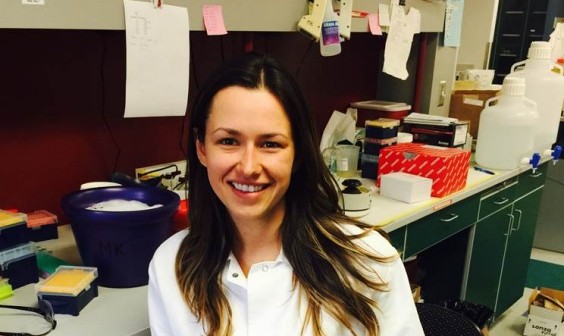The Rare Disease Day symposium on February 26-27 featured many fascinating talks from experts on numerous aspects of congenital disorders of glycosylation (CDGs), from fundamental work on glycosylation pathways to animal models to diagnosis in the clinic. Following are summaries of each presentation:
Lawrence Tabak, D.D.S, PhD, deputy director of the NIH—After presenting his research on glycosylating enzymes in the 1980s, which helped lay the foundation for understanding the processes that are impaired in CDGs, Tabak discussed several initiatives by the NIH, including the Precision Medicine Initiative and efforts to increase reproducibility.
William Gahl, MD, PhD, director of the National Human Genome Research Institute (NHGRI)—Gahl highlighted several successes of the Undiagnosed Diseases Program. Most relevant to the field of CDGs was the discovery of the gene underlying a new type of CDG, in which an enzyme responsible for generating a necessary precursor for protein glycosylation (uridine diphosphate) is inactivated. This work also found that supplementation with uridine was an effective therapy.
Shengfang Jin, PhD, scientist at Agios Pharmaceuticals Inc.—Jin presented her work on a mouse model of PMM2-CDG, which is caused by mutations in the gene for phosphomannomutase 2. Her research has identified a promising biomarker for PMM2-CDG, which is one of the more common types of CDG.
Richard Steet, PhD, associate professor at the University of Georgia—Steet’s lab is developing a new method of identifying which proteins are glycosylated by particular enzymes, which is important for understanding how each CDG-associated mutation leads to disease.
Reid Gilmore, PhD, professor at University of Massachusetts Medical School—Gilmore gave a detailed view of how two CDG-associated mutations, in isoforms of the same component (STT3A and STT3B) of a major glycosylating enzyme, oligosaccharyltransferase, impair protein glycosylation.
Robert Haltiwanger, PhD, professor at the University of Georgia—In another presentation on fundamental glycobiology, Haltiwanger described the function of two enzymes in the same pathway (fucosylation) inactivated in certain CDGs. Mutations in these enzymes underlie Peters plus syndrome and a single case of an unnamed severe CDG, respectively.
Marjan Huizing, PhD, staff scientist at the NHGRI—Using a mouse model of GNE myopathy, a progressive muscle disease caused by mutations in an enzyme required for protein sialylation, Huizing’s lab identified a therapy, supplementation with the sugar ManNAc, which is now in phase 2 trials, and identified a key biomarker. The mouse model also suggested that sialylation problems may be associated with certain kidney diseases, which is now under investigation.
Raymond Wang, MD, clinical geneticist at CHOC Children’s Clinic—Wang told the story of how he and scientific collaborators diagnosed an unusual case that initially appeared to be a CDG because of abnormal glycosylation. The disease-causing mutation was finally identified to be in mitochondrial translation, highlighting the similarities between CDGs and mitochondrial diseases.
David Beeson, PhD, professor at the University of Oxford—Beeson described a subset of congenital myasthenias caused by mutations in glycosylating enzymes, which have distinct symptoms from other myasthenias. These mutations likely cause this disorder by selectively impairing processing of the receptor by which muscle cells receive signals from nerves—the nicotinic acetylcholine receptor.
Lance Wells, PhD, professor at the University of Georgia— Wells summarized his work on the molecular basis of dystroglycanopathies, a subgroup of muscular dystrophies that arise from defects in O-mannosylation enzymes. Most recently, his lab resolved the puzzle of how mutations in an enzyme involved in a different form of glycosylation could cause this disease—they showed that the enzyme’s function had been incorrectly assigned.
Taroh Kinoshita, PhD, professor at Osaka University—Kinoshita is an expert on the addition of sugar-based anchors to lipids (GPI anchors), which link many proteins to the cell surface. He presented some of the extensive work from his team on how mutations in GPI-synthesizing enzymes cause disease, including identification of a therapy, vitamin B6, for seizures in GPI deficiencies.
Eva Morava, MD, PhD, professor at Tulane University Medical Center and the University of Leuven—Morava described preliminary results of a clinical trial of galactose supplementation to treat PGM1-CDG, in which patients are deficient in phosphoglucomutase-1 (this also impairs glucose metabolism). In these patients, galactose improves liver function and endocrine abnormalities and normalizes clotting factors.
Lynne Wolfe, MS, C.N.R.P. clinical research coordinator at the NHGRI—Wolfe discussed the CDG natural history study underway at the NIH—its goals and progress so far. The findings of this study will serve as a resource both for future diagnoses and for researchers in the field to correlate pathways with symptoms.
Tadashi Suzuki, D.Sci., team leader at the RIKEN Global Research Cluster—NGLY1 is different from other CDG-associated genes—it encodes a deglycosylating enzyme, which helps degrade glycosylated proteins that aren’t properly folded. Suzuki’s team has shown that inhibiting another deglycosylating enzyme, ENGase, prevents the formation of aggregates of misfolded proteins, suggesting that it could be a therapeutic target.
Hamed Jafar-Nejad, MD, associate professor at Baylor College of Medicine—Using fruit flies as a model, Jafar-Nejad’s lab is investigating how NGLY1 deficiency affects development. These flies replicate many of the features of human disease, including growth delay and impaired movement, so they could yield important insights into pathogenesis.
